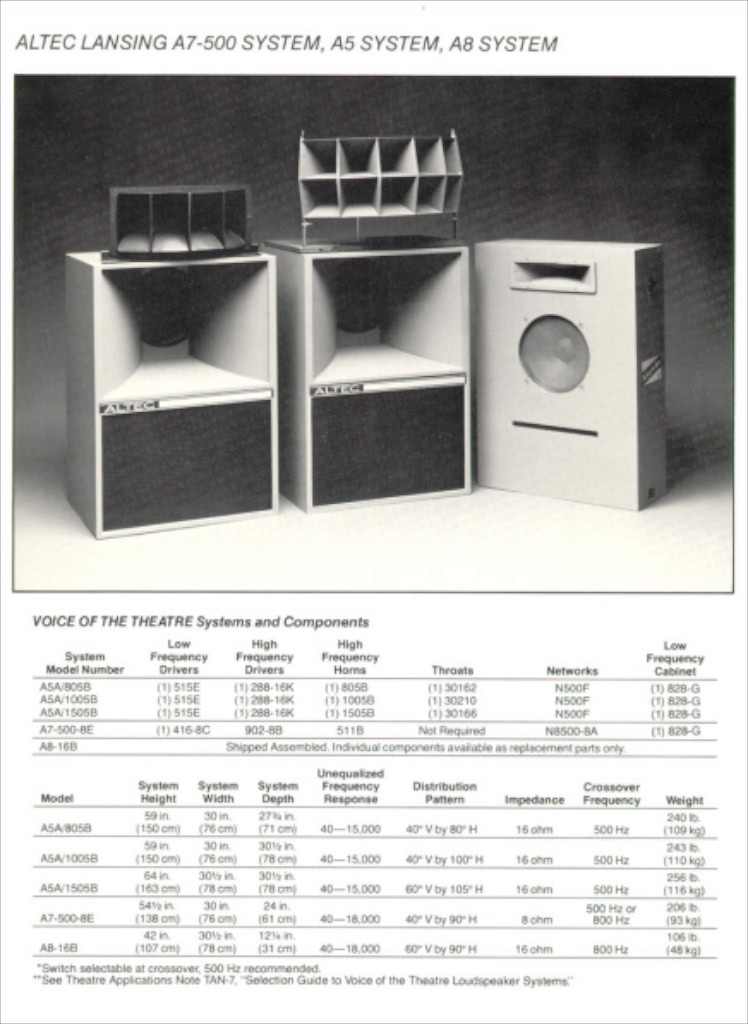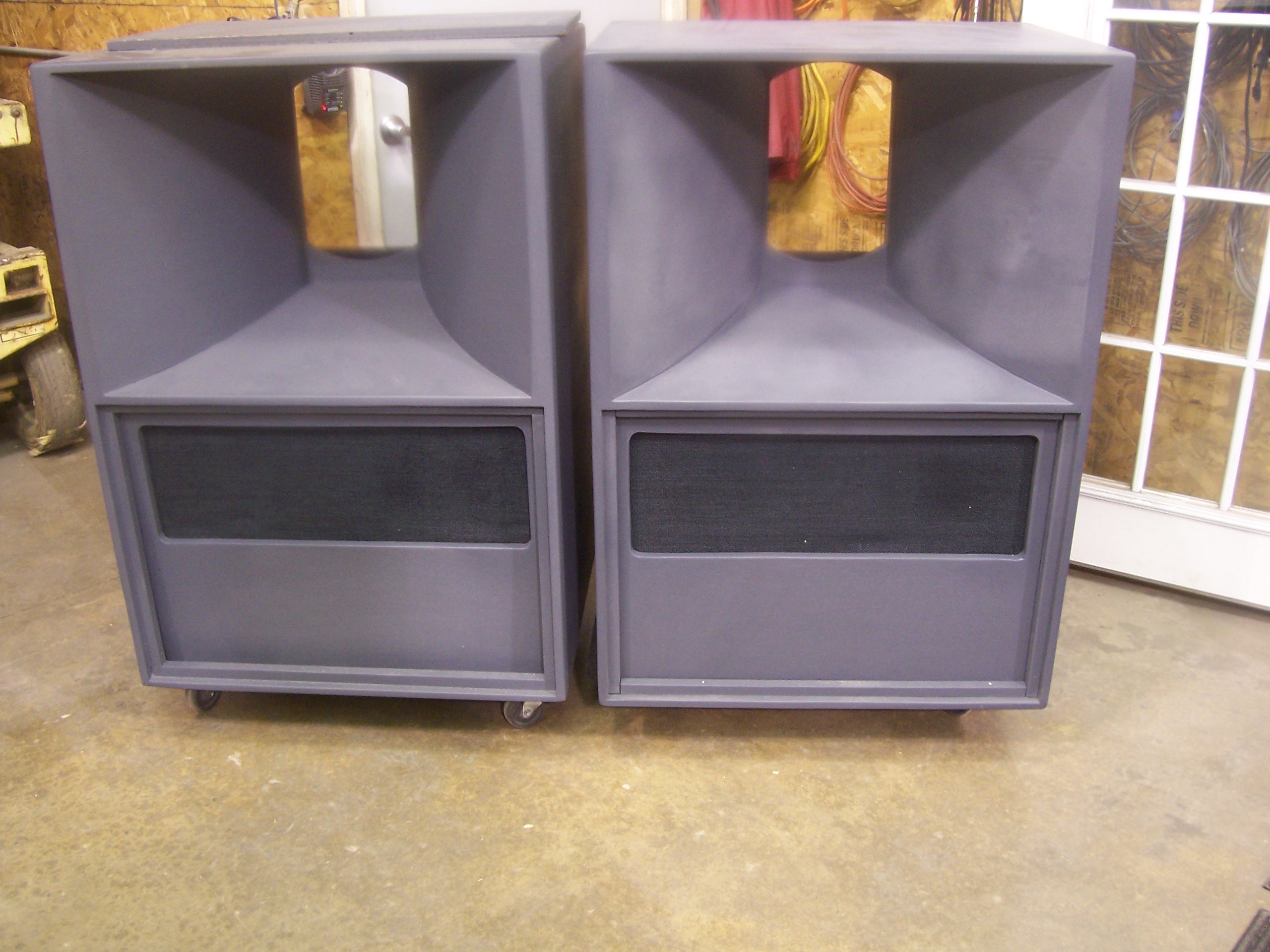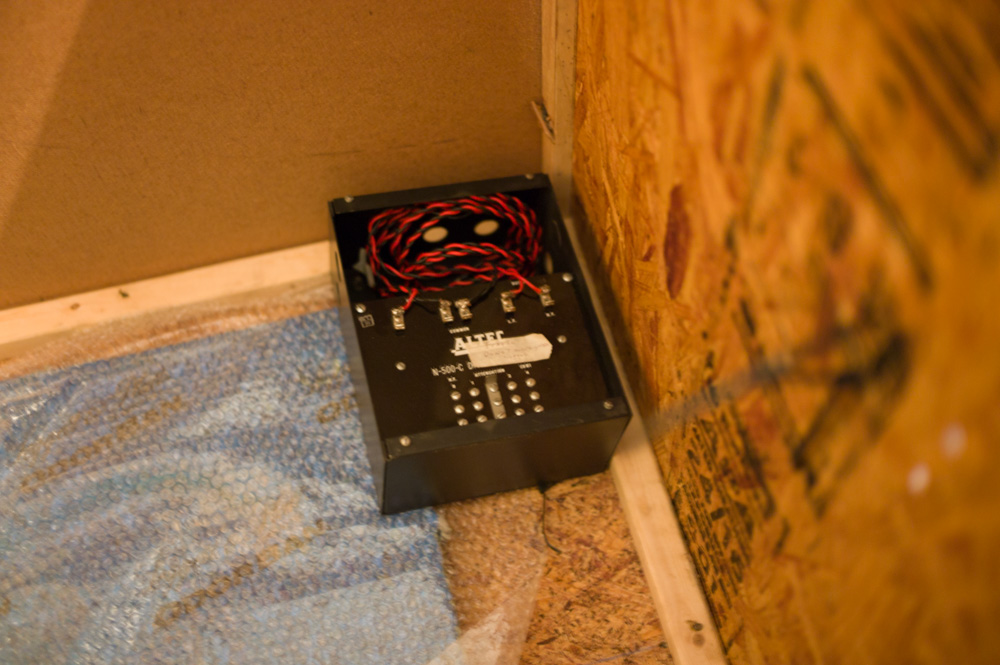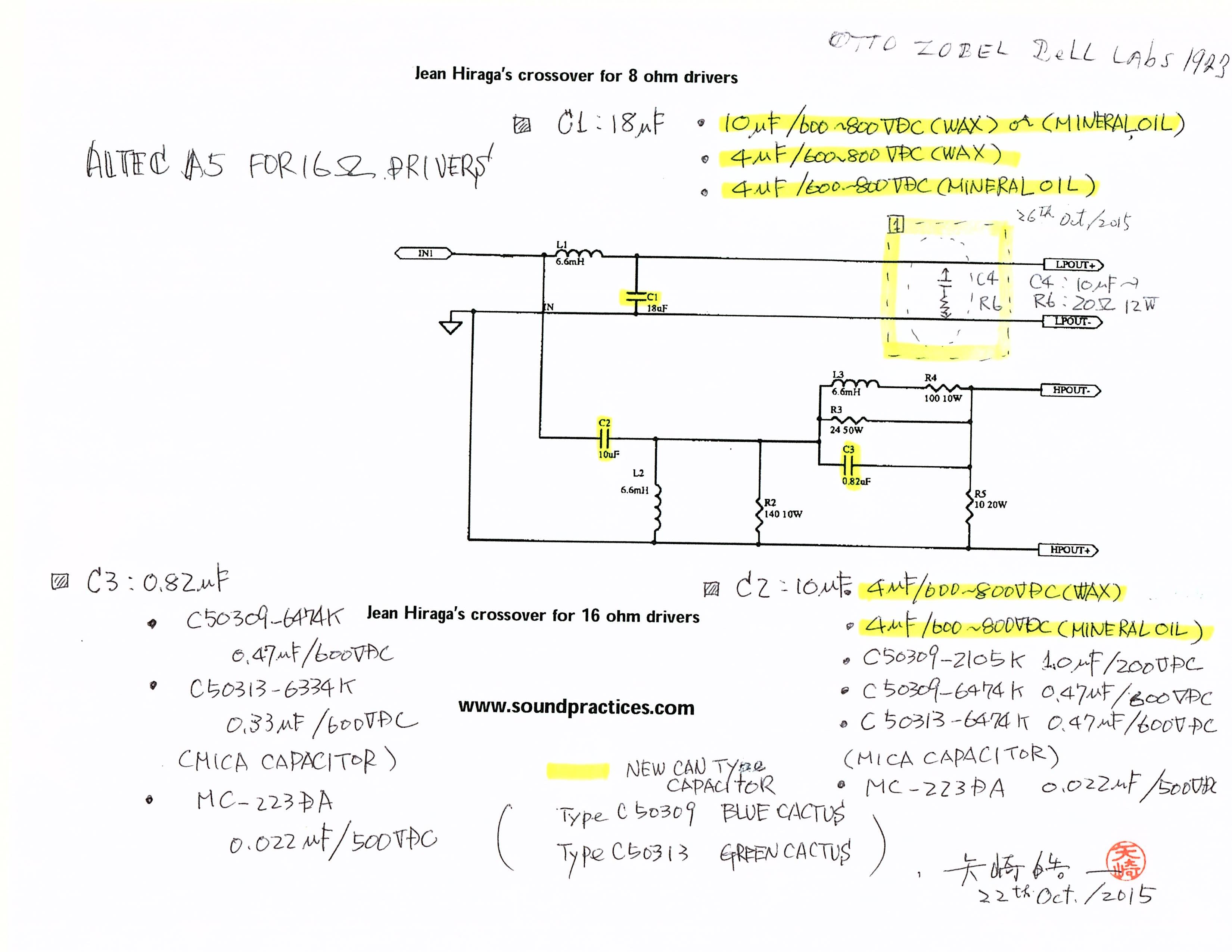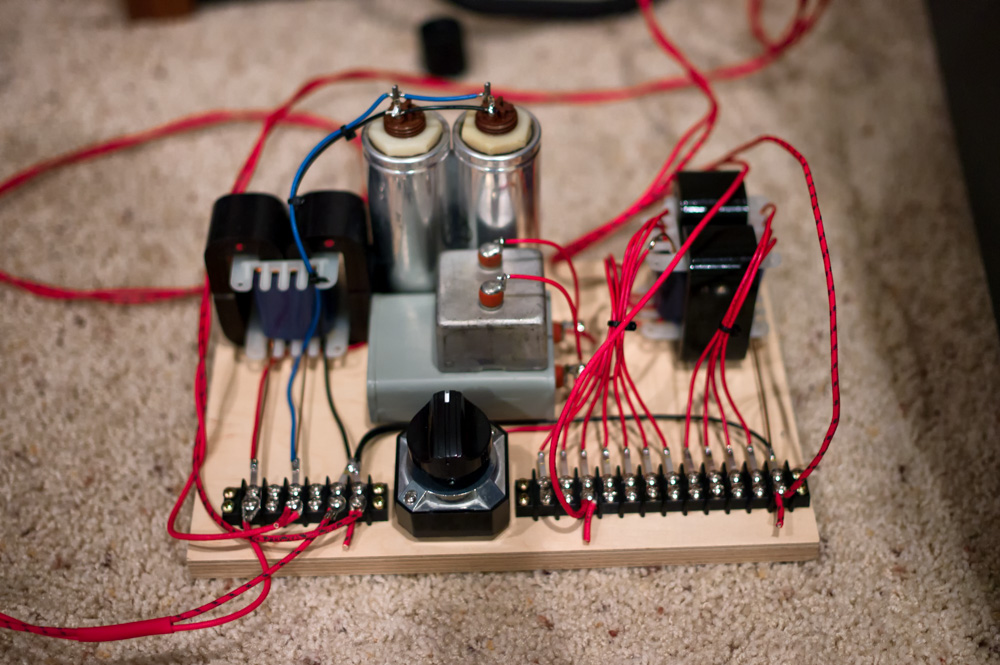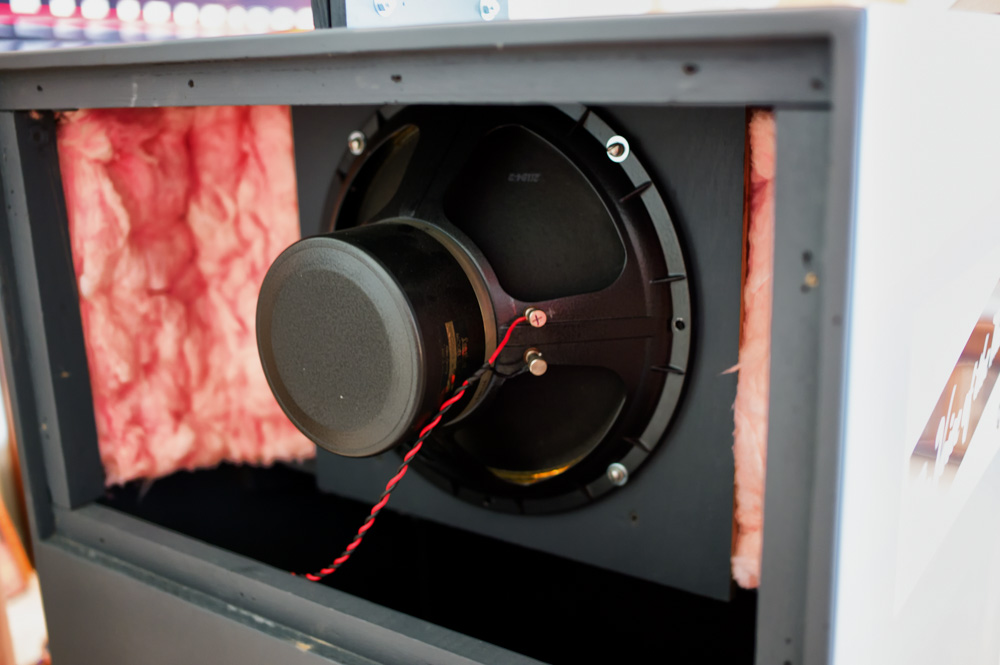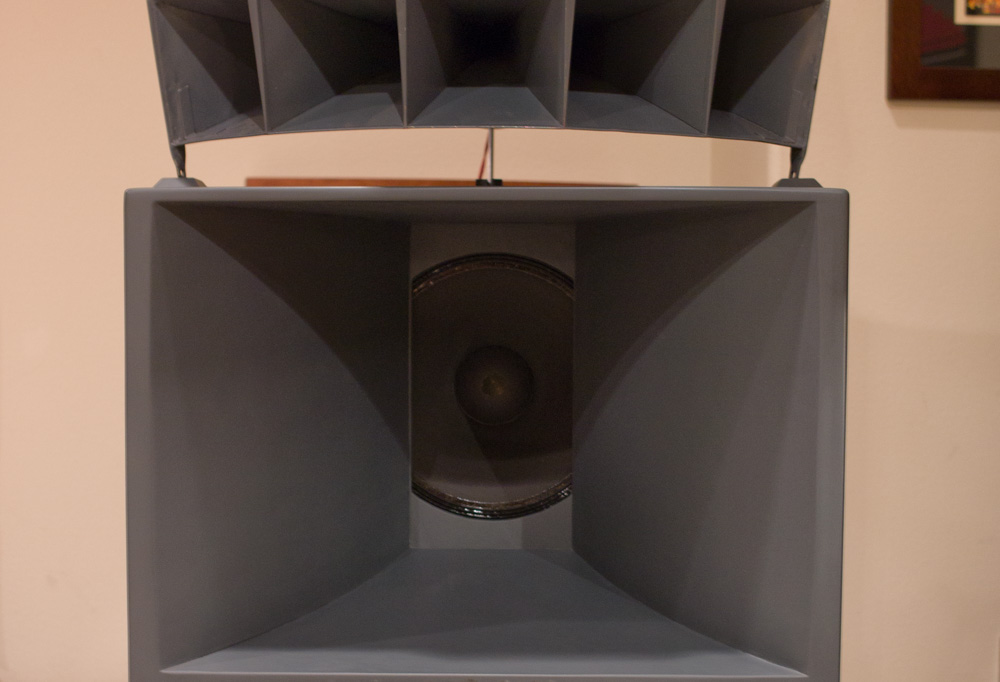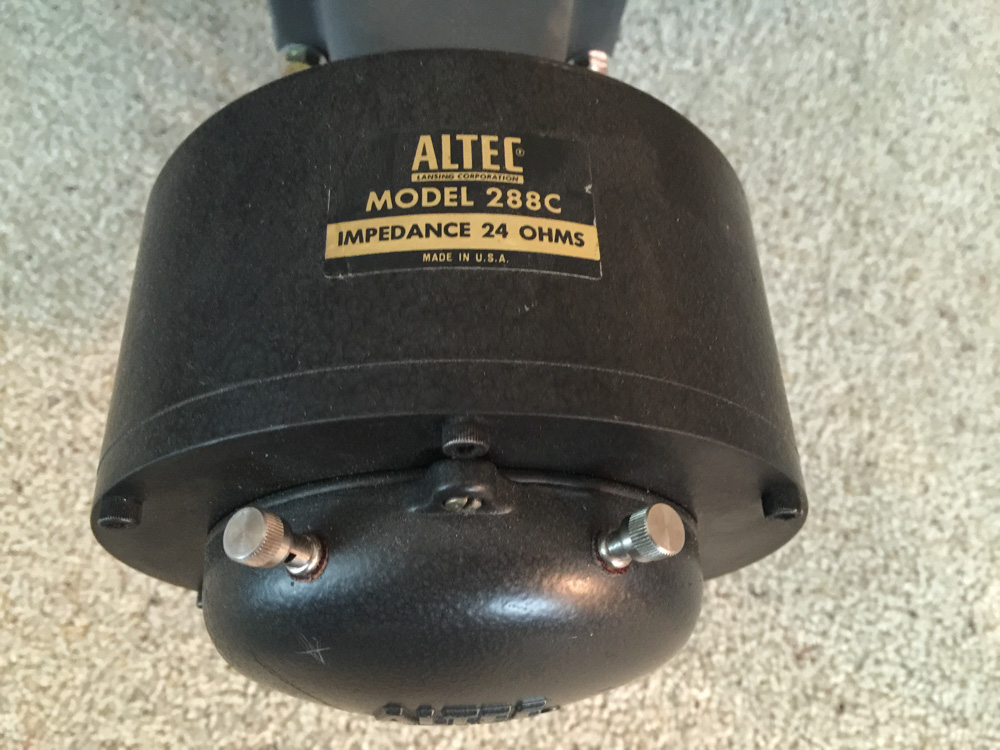In my Part 1 post I introduced you to Gary Fischer and the Altec-Lansing A5 Voice of the Theatre restoration he did for me that forms the basis of the Altec A5 VOTT Project here at Jeff's Place.
For my restoration, I chose two 825B bass horn cabinets, two 515B Alnico low-frequency drivers, two N-500-C crossovers, two 1005B 10-cell horns, and two 288C Alnico high-frequency compression drivers, which is a classic Altec-Lansing A5 Voice of the Theatre combination of components from that period, as shown in the brochure below.
In my Part 2 post, I described the labor intensive process that Gary goes through to restore the vintage 825B bass horn cabinets. It's a lot of work!
Then in my first post of 2016 - The Vintage Beat: An Altec A5 VOTT Project Update - I discussed the dismal performance I got on first listening with an Altec N-500-C crossover that was malfunctioning, which presumably got the worse end of being shipped.
I wasn't sure what to expect from the N-500-C crossovers, but given that my Stokowski VOTTs were sounding so good with their N-500-D crossovers, I was hopeful. So much for that.
I boxed up the N-500-C crossovers last night to send back to Gary, and Gary is going to send back a pair of Altec N-500-D crossovers like I have in my Stokowski VOTTs to replace them with.
It will make for an interesting comparison to see how the N-500-D crossovers sound on the A5 VOTTs once I get them from Gary, and will help give some insights to the Stokowski VOTTs as well.
In Part 2 I also discussed the plan to build a pair of Yazaki-san 'Real Sound' versions of the Jean Hiraga designed crossovers for the A5 VOTTs, which I find to be a tremendously exciting part of the project!
I have mentioned to Yazaki-san how handy the adjustability of the N-500-D crossovers is for getting the high-frequency horns to integrate smoothly with the Stokowski VOTTs, as well as the adjustability of Werner Jagusch's pair of autoformer based crossovers (below) for doing the same with the A5 VOTTs.
As a result, Yazaki-san has suggested we use a quality NOS wirewound 20Ω to 30Ω variable resistor at the R3 position in the Hiraga-style A5 crossover circuit shown above, which will allow us to find the best point for the level of the 288C horn driver.
The NOS wirewound VR that Yazaki-san wants to use is the same one that he chose for the DA30 SET amplifier he built for his friend, Ookubo-san, and he is going to kindly send them to me for the circuit. Thank you Yazaki-san!
I'll get started on breadboarding the crossovers as soon as the NOS wirewound VRs arrive from Yazaki-san, and the inductors arrive from Daryl at Arizona Capacitors.
We're getting close!
Additionally, I described Werner Jagusch's pair of autoformer based crossovers (€549 Euros/pair) that I have been experimenting with, and how I found them to sound pretty nice with the high-frequency volume set on the sixth terminal screw from the left, with the roll-off starting frequency dial set at the 9 o’clock position. Those settings gave a rich, dark, sweet presentation to the A5 VOTTs which was nicely musical.
I also promised that in my next post on Gary’s restoration of the A5 VOTTs that I would cover the 515B Alnico low-frequency drivers, the 288C Alnico high-frequency compression drivers, and the 1005B high-frequency horns.
Let's talk about the 15-inch 515B Alnico low-frequency drivers first. Alnico is an acronym for the aluminum (Al), nickel (Ni), and cobalt (Co) that is alloyed with iron to make the magnets of the motor structure. I suppose I should make a brief mention that Alnico magnets are preferred by quite a few musicians, audiophiles, and music lovers, for their reputed ability to convey a finely textured, vivid, and colorful presentation of the music with superb micro-dynamics and 'tone'.
The 515B Alnico low-frequency driver has a frequency response of 20Hz to 1000Hz, 103dB sensitivity, a 4.4 pound Alnico magnet rated at 14,750 Gauss, and weighs in a 26 pounds.
Given that Altec designed the 515B Alnico low-frequency drivers to essentially last forever blasting away behind the screen in a theater, I figured Gary wouldn't have to do much more than pick out some nice vintage examples from his supplier, then check them to make sure they are not damaged & they're working properly, and finally, install them into the restored 825B bass horn cabinets.
When I asked Gary about his drill for inspecting the 515B Alnico bass drivers, he told me, "I check the condition of the paint. I make sure there is no voice coil rubbing, and that there is no discoloration in the lead-in wires to the voice coils. If the lead-in wires are black in color they are burnt and junk. I make sure there are no tears or scratches on the cone paper, and that the cork surround is intact. Finally, I power them up to less than abusive levels to warm them up, then I turn down the volume and listen for flaws."
Like the vintage Altec 515B Alnico low-frequency driver, the vintage Altec 288C Alnico high-frequency compression driver was built equally robustly for theatre duties.
The Altec 288C Alnico compression driver gives smooth response from 500Hz up to 16,000Hz, has a sensitivity of 115dB, a voice coil diameter of 2.8-inches, and weighs 20 pounds (Almost as much as the 515B!).
Gary gives each 288C a thorough check, and more importantly, he services the drivers by replacing their diaphragms with new aluminum diaphragms from Great Plains Audio (who are essentially what's left of the original Altec manufacturing group), to make sure the high-frequencies are up to snuff.
Altec 288C compression drivers have 24 Ohm impedance, but you can change it to 16 or 8 Ohms depending on which diaphragms are installed. Great Plains audio says, "When the original 24 ohm impedance is not required, use the diaphragm manufactured for the Altec Lansing 299-8A, Altec original part #25884 (8 ohms), or the diaphragm manufactured for the Altec Lansing 299-16A diaphragm, Altec original part #25885".
Gary installed the 16 Ohm diaphragms in my 288C drivers.
The 288C Alnico compression driver is mounted to the 10-cell Altec 1005B horn. Gary told me the original horn sled for the 1005B high-frequency horn - designed for filling large spaces with sound - puts it up too high for domestic use, and as a result it doesn't blend together very well with the 825B bass horn in the smaller spaces of home listening environments.
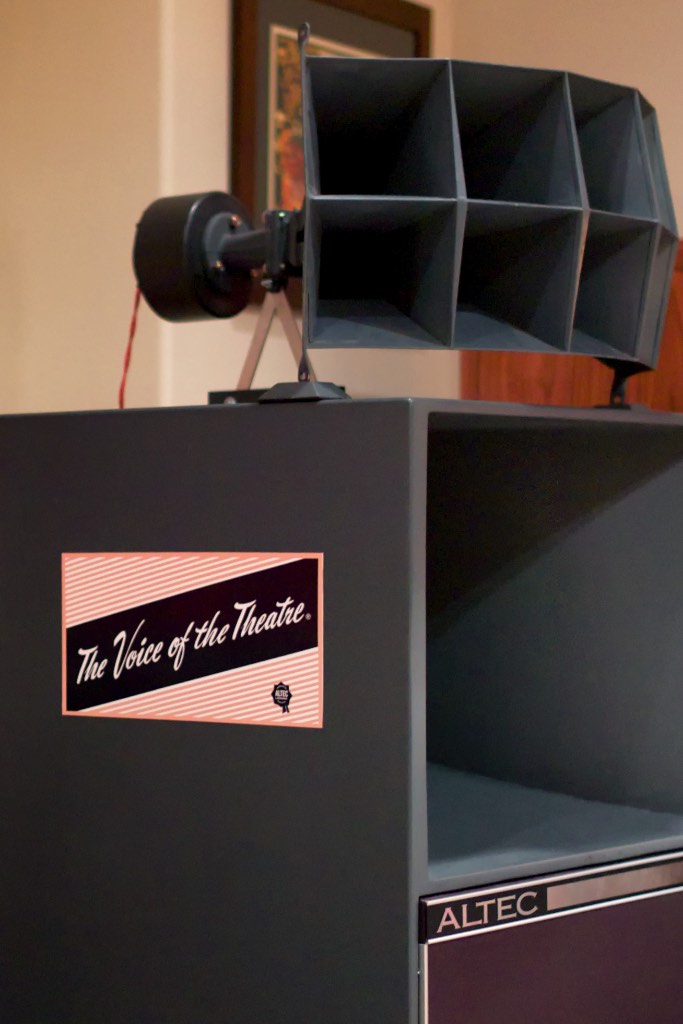
Gary's mounting system puts the 'big room' 1005B 10-cell horn down lower so it works better in domestic listening environments.
Gary recommended a lower mounting system for the 1005B high-frequency horn, saying, "My means of positioning the horn is so much better for speaker phasing than the original sled. My little system is simple and it brings the high-frequency 1005B horn lower, and more in phase with the 825B low-frequency horn, so you don't have to be 20 foot away to hear both drivers blend together and sing as one. But it is susceptible to being easy knocked off the cabinet if careless."
Gary's is a 3-point mounting system where the horn rests on top of the 825B. Ideally, the diaphragm of the 288C Alnico compression driver should line up with the 515B Alnico low-frequency driver for best integration of the high & low-frequencies.
So that's it. When you put all the pieces together you get a classic Altec-Lansing A5 Voice of the Theatre loudspeaker system.
Please join me as the Altec A5 VOTT Project proceeds, and we endeavor to get the best performance possible out of this important vintage design.





